This article was co-authored by Helena Ronis. Helena Ronis is Co-founder and CEO of AllFactors, a unified web analytics software to drive company's marketing and business growth. She has worked in product and marketing in the tech industry for over 8 years, and studied Digital Marketing & Analytics at the MIT Sloan School of Management Executive Program.
wikiHow marks an article as reader-approved once it receives enough positive feedback. This article received 11 testimonials and 84% of readers who voted found it helpful, earning it our reader-approved status.
This article has been viewed 549,628 times.
Every business, large or small, needs a competitive advantage to distinguish itself from the competition. In the aggressive business world, especially in today’s economy, every advantage counts to establish your business in the top of your industry. Gaining a competitive advantage takes strategic planning, extensive research and an investment in marketing.
Steps
Work to understand your customers.
-
Identify the demographic qualities of your customer base. If you serve businesses, what type of businesses do you typically sell to? If you serve individuals, are they typically young or old, male or female, married or single? Do they live within a 1⁄4 mile (0.4 km) of the business or 50 miles? What is their typical income? Are they different from your competitor's customers? If you do not understand your customers, you cannot determine why they patronize your business.[1] X Expert Source

Business Advisor Expert Interview. 23 January 2019.- Take this one step further by seeking to understand your customers on a personal level. What are their hobbies? What do they care about? What aspects of your business or your product resonate with them?
- Demographic information can be discovered through customer interaction, surveys, or analyzing customer information.
Examine your business's unique strengths.
-
This can let you know which areas you can build on to create a competitive advantage. Ask yourself, "Why do customers buy from me?" The answer to this question will help you understand what value you offer them.[2] X Expert Source

Business Advisor Expert Interview. 23 January 2019.- For example, if you own a Chinese food restaurant, the quality of food, the location, or perhaps the speed of the delivery service may all contribute to a customer choosing you over your competition.
- Don't be afraid to ask your customers directly. You can make a survey for them to fill out, or just approach them, but your key objective is to discover why it is they choose you.
- If many customers list location, for example, you can work on other aspects of your business to create an even greater advantage.
Look at your competitors.
-
A competitive advantage means you need to offer some things your competitors don't. Therefore, you need to know what it is your competitors do well, and do not do well. Think about your competitors' products, services, prices, location, and marketing. Then, compile a list of all the reasons you feel a customer would choose your competitors' business.
- Compare this to your list of advantages. What strengths do you have that your competition does not have? Which strengths does your competition have that you do not? The areas of strength that you have are the areas you should focus on expanding.
- Remember not to be a "me too" competitor as much as possible. For example, if your competition has one recipe that many customers come to that restaurant for, simply imitating their recipe will not add to your competitive advantage. Instead of trying to copy your competitor's advantages, strengthen your own to create a unique set of strengths that cannot be replicated.
- Remember that your competitors can include more than lookalike businesses. For example, a Chinese restaurant competes with other Chinese restaurants, but also with other dining choices.
Hire a company that specializes in providing business information.
-
This type of company can help shed some helpful light on your business. For example, Cortera will research, construct and analyze a competitive landscape of your target market. They and similar companies will have extensive databases to quickly access the information you will need. The more information you have, the easier it is to make decisions on what is working and what is not.
- Detailed customer knowledge is equally important as competitor knowledge. Gaining in-depth insights about your customer portfolio will allow you to maximize revenue potential, increase customer retention, and boost prospective customers.
- You can use a mix of many tools and methods to measure consumer insight and both your position in the market and the positions of your competitors. Along with traditional company information resources, consider social media analysis tools that allow consumer insight mining on a large scale.[3] X Research source
Review your core strengths.
-
Reviewing your core strengths can be very helpful. Once you have identified your core strength areas, you can add to those using several market strategies to build a competitive advantage, or to create new areas of advantage.
- For example, you may have a major strength in terms of product quality. You can further add to this strength by focusing even more heavily on fantastic quality, but also trying to deliver your product faster, and at a lower cost.
Reduce costs.
-
Cost reduction is one strategy that businesses can pursue to gain a competitive advantage, or to add to their advantage. Most markets have price-sensitive consumers, and being able to offer your product or service at a lower price is a certain way to create value for your customers. Walmart, for example, has a competitive advantage due to its ability to provide low prices.[4] X Research source
- Examine your entire production process. This includes everything from purchasing supplies, to how your workers produce your products, to how your product is sold.
- Consider investing in technology that can reduce costs. If you own a restaurant, for example, purchasing energy-efficient equipment can reduce your operating costs. If your business has an excellent credit rating compared to your peers, you can finance these purchases at a lower cost.
- Examine how your workers are producing as well to make sure they are not wasting resources and that they are producing as much as possible.
Focus on service.
-
In your particular market, service may be a key factor that differentiates competitors. If your business already has a strength in service, consider doing more to focus in this area.
- Hiring better staff, improving training standards, managing staff closer, offering rewards and incentives for strong service, and offering more convenient hours of operation can all help generate an advantage. It is important to create a culture of excellent service. If your service advantage is based on a few simple factors (like longer hours), your competition can easily replicate it.
Focus on product or service quality.
-
If you cannot compete on location or on price, you can always compete on quality. This is even more true if high quality is one of your strengths. Customers will often pay more or go to greater lengths for an exceptional product.
- You'll need to first determine exactly what quality means in a particular market. For example, do customers want maintenance-free products, better design, or longer life? What does quality mean to your customers?
- Look at best-selling products in your market. What aspects of these products make them desirable?
- Focus on taking your unique talents and background and using these. For example, if you are in the restaurant business, and you spent three years overseas studying cuisine, you can use your experiences and contacts there to establish truly unique recipes.
- Focusing on hiring the right people, and using higher quality supplies can dramatically enhance the overall quality of your product or service.
Differentiate your products and services.
-
Look for one or more marketable attributes that you have that can set you apart from your competitors. Then find the segment of the market that finds those attributes important and market to them. For example, do you have the longest battery life? Frequent travelers need this. The lowest price? That's important to lower income customers. Free shipping? If you are the only one offering this it could attract new customers.
- This process can also work in the other direction by conducting research to determine which things consumers find most important and then developing a niche market for those products or characteristics. For example, people with arthritis have trouble opening cans and jars. You could design a gadget that makes it easier for them and then advertise in medical publications.
- Make sure your product has both attractive features and benefits. A feature is something that the product has or is, such as a drill that has interchangeable drill bits. A benefit is a positive outcome that the user experiences as a result of using the product, like how using an umbrella keeps you dry in the rain.[5] X Research source When a product has both of these, it's much more possible to gain a competitive edge.
Form an alliance with another company.
-
Forming a partnership or alliance with another company can be an excellent way to gain a competitive edge. For example, assume you are a local equipment supply company. You could approach a local transportation company and offer to provide them with a discount on products in exchange for quicker or more preferential local transportation. In doing so, you can offer your customers their products in a shorter time frame than your peers, providing you with a competitive advantage.
Create an “economic moat."
-
Take advantage of barriers to enter into the market, using them to dissuade competitors from challenging your market share. In some cases, an established company’s ability to manipulate hurdles to enter and compete in its market becomes an effective tool against new competition, further entrenching the business and preserving its profit potential for the foreseeable future.
- For example, you may own an Asian-themed restaurant located in a mall. This would provide an economic moat, since it is unlikely the mall would want to open multiple Asian-themed restaurants in the same area. This prevents new business from competing with you.
- To create the moat, you may be able to negotiate a site monopoly on your type of business if you are located on a multi-business site like a mall or strip shopping center.
Stay on the cutting edge.
-
Once you’ve gained a competitive advantage, your work is far from complete. To be successful, you will need to continuously maintain your competitive advantage, through pricing, product features, and marketing. For example, if you are in the technology space, you need to be continually designing new products that are faster, less expensive and have more functionality. After all, your competitors are not going to sit back and allow you to steal their market share.
- Sometimes you may need to take chances to keep ahead of the pack and differentiate your business, but with big risk often comes big reward. Just remember to do your research before diving head-first into new ideas.
Predict future trends in your industry.
Research and monitor your competitors constantly.
Adapt to your customers' wants and needs.
References
- ↑ Helena Ronis. Business Advisor. Expert Interview. 23 January 2019.
- ↑ Helena Ronis. Business Advisor. Expert Interview. 23 January 2019.
- ↑ http://www.netbase.com
- ↑ http://study.com/academy/lesson/types-of-competitive-advantage-cost-product-niche-sustainable-advantages.html
- ↑ http://www.wordstream.com/blog/ws/2017/02/21/features-vs-benefits
You Might Also Like

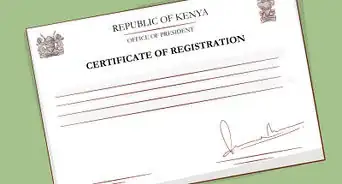

-in-the-USA-Step-20.webp)










About This Article

To gain a competitive advantage in business, focus on improving or marketing some aspect of your company that distinguishes you from your competitors. For example, you could lower prices, spend more time training staff, provide faster service, or offer niche products. Do some research to see what your competitors offer and survey your customers to better understand their needs. If you are struggling to gain a competitive advantage, you could also hire a consulting firm to help you analyze your target market. For more resources from our Financial reviewer on how to reduce costs so you can offer lower prices, keep reading.







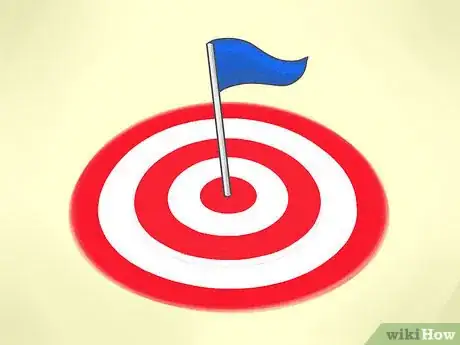

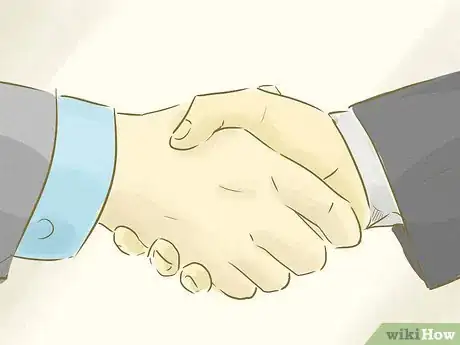


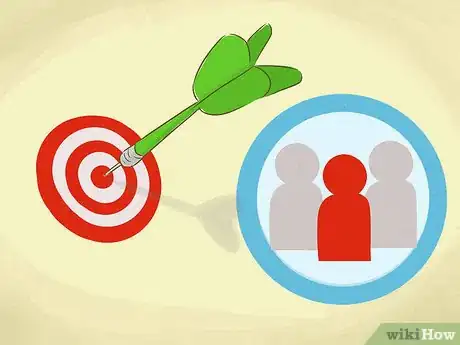











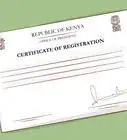

-in-the-USA-Step-20.webp)


































